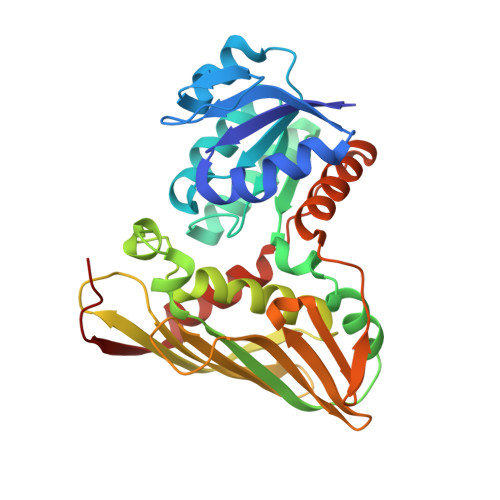Structural insights into the catalytic and substrate recognition mechanisms of bacterial l-arabinose 1-dehydrogenase.
Watanabe, Y., Iga, C., Watanabe, Y., Watanabe, S.(2019) FEBS Lett 593: 1257-1266
- PubMed: 31058311
- DOI: https://doi.org/10.1002/1873-3468.13424
- Primary Citation of Related Structures:
6JNJ, 6JNK - PubMed Abstract:
In Azospirillum brasilense, a gram-negative nitrogen-fixing bacterium, l-arabinose is converted to α-ketoglutarate through a nonphosphorylative metabolic pathway. In the first step in the pathway, l-arabinose is oxidized to l-arabino-γ-lactone by NAD(P)-dependent l-arabinose 1-dehydrogenase (AraDH) belonging to the glucose-fructose oxidoreductase/inositol dehydrogenase/rhizopine catabolism protein (Gfo/Idh/MocA) family. Here, we determined the crystal structures of apo- and NADP-bound AraDH at 1.5 and 2.2 Å resolutions, respectively. A docking model of l-arabinose and NADP-bound AraDH and structure-based mutational analyses suggest that Lys91 or Asp169 serves as a catalytic base and that Glu147, His153, and Asn173 are responsible for substrate recognition. In particular, Asn173 may play a role in the discrimination between l-arabinose and d-xylose, the C4 epimer of l-arabinose.
- Department of Bioscience, Graduate School of Agriculture, Ehime University, Matsuyama, Japan.
Organizational Affiliation:

















